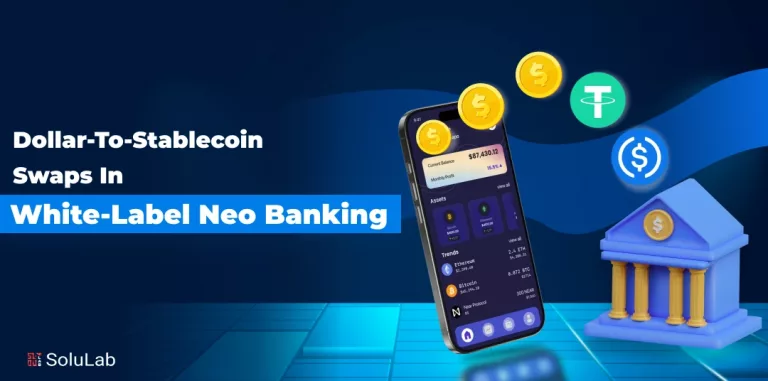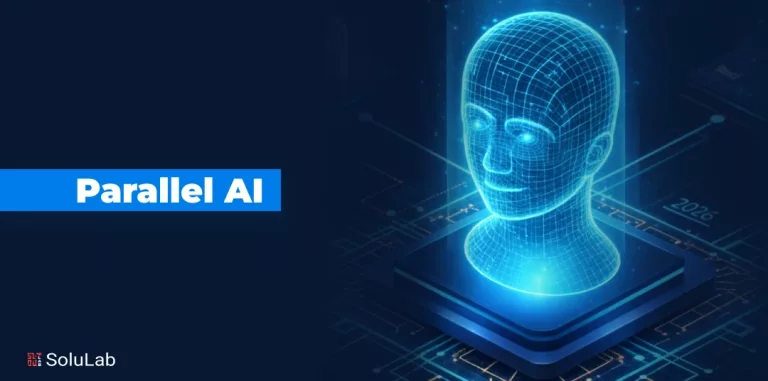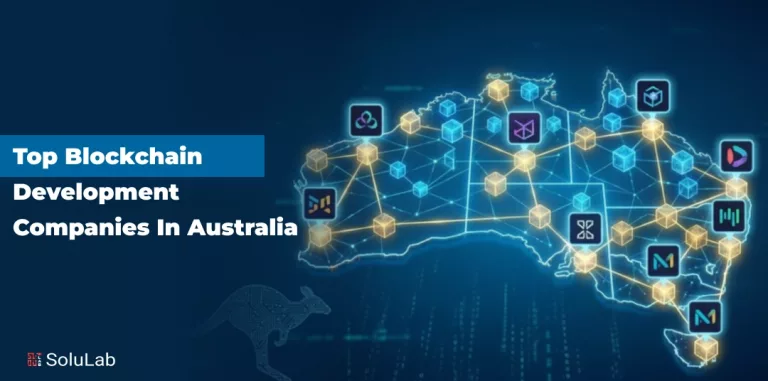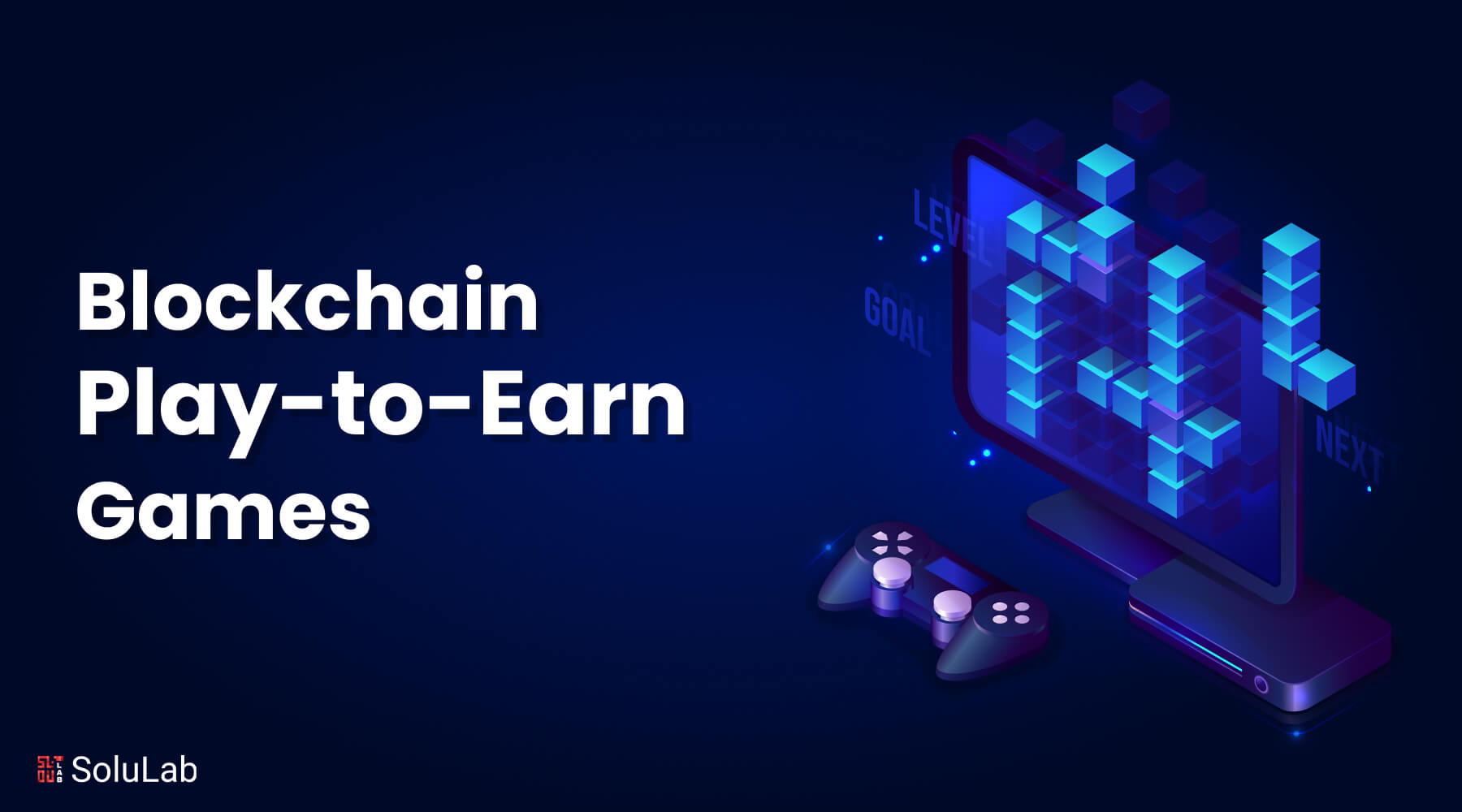
In the gaming world, a revolutionary concept has emerged – play-to-earn games. These virtual experiences have started to reshape how we view and participate in the gaming industry, thanks to the power of blockchain technology. In this blog, we will delve into the concept of play-to-earn games and how blockchain is playing a pivotal role in this transformation.
Play-to-Earn Games: A New Paradigm
Play-to-earn games, often abbreviated as P2E, represent a paradigm shift in the gaming industry. Unlike traditional video games, where players invest time and skill solely for entertainment, play-to-earn games allow participants to accumulate in-game assets that have real-world value. These assets can be traded, sold, or even used as collateral, creating economic opportunities for players.
The defining characteristics of play-to-earn games include decentralized ownership of assets, blockchain-based scarcity, and transparent, trustless ecosystems. Players in P2E games not only enjoy the immersive experience but also have the chance to earn a living through their gaming endeavors.
Read Blog Post: Top 25 Blockchain-Based Gaming Companies
Gaming has come a long way since the days of Pong and Space Invaders. In the early years, video games were perceived as pure entertainment, with no tangible value beyond the screen. Over time, competitive gaming, or esports, emerged, offering professional players the chance to earn money through tournaments and sponsorships.
However, the transformation truly began with the rise of virtual economies within video games. Games like World of Warcraft introduced the concept of virtual currencies and in-game trading. Players began to realize the potential for making a profit within these virtual worlds.
The term “play-to-earn” may have only recently gained prominence, but its roots trace back to the early 2010s. It was in this era that blockchain technology, primarily associated with cryptocurrencies like Bitcoin, was applied to gaming. Games like CryptoKitties and Decentraland pioneered the idea of blockchain-based assets and ownership.
One of the pioneering play-to-earn games, Axie Infinity, launched in 2018 and set the stage for this revolutionary concept. Axie Infinity allowed players to own, breed, and trade digital creatures called Axies, with the potential to earn real income in the form of cryptocurrency. The success of Axie Infinity paved the way for a new era in gaming, as more developers and players recognized the economic possibilities that play-to-earn offered.
Understanding Blockchain Technology
Blockchain technology, which underpins play-to-earn games, is a distributed ledger that records transactions across a network of computers. It’s designed to be transparent, immutable, secure, and decentralized. Each record, or block, is linked to the previous one, creating a chain of blocks.
Blockchain technology is the backbone of play-to-earn games, enabling them to function as they do. It ensures that in-game assets are truly owned by the players and not controlled by centralized game developers or publishers. The transparent nature of the blockchain also guarantees that all transactions and asset scarcity are publicly verifiable, enhancing trust within the ecosystem.
Benefits of Blockchain in Gaming
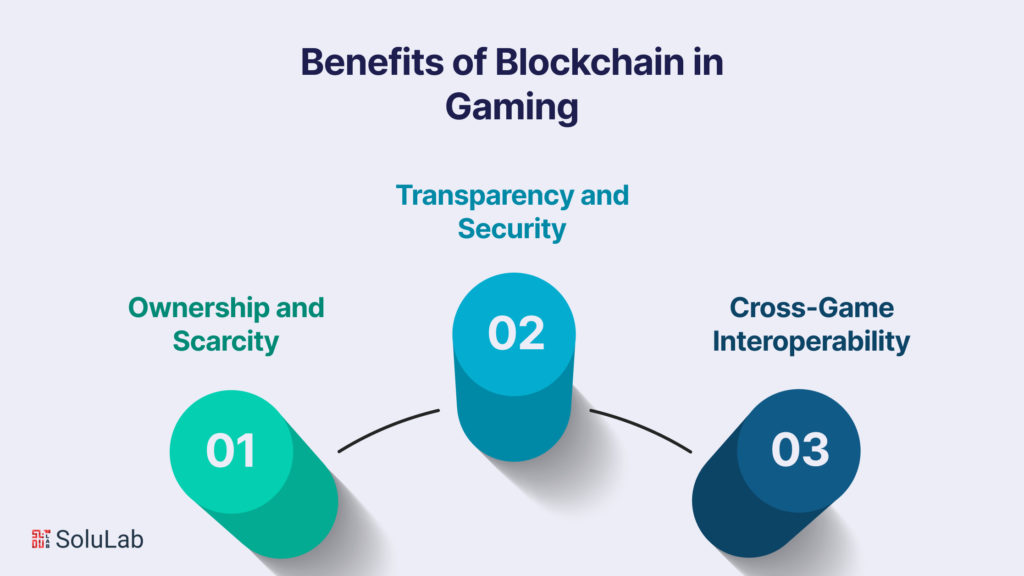
Blockchain technology offers a plethora of benefits in the context of gaming, which are driving the play-to-earn revolution:
-
Ownership and Scarcity
In traditional games, items and currency often exist solely within the game’s servers. Players may invest significant time and money into acquiring virtual assets, only to find them disappear when a game shuts down. In play-to-earn games, assets are recorded on the blockchain, granting players true ownership. This means they can buy, sell, trade, or even use these assets as collateral in decentralized finance (DeFi) applications.
Blockchain also introduces scarcity by limiting the supply of certain in-game assets, mimicking the scarcity of physical items. This scarcity enhances the value of these assets, as players understand that there is a finite number available, creating a sense of rarity and exclusivity.
-
Transparency and Security
The blockchain ledger is transparent and secure, ensuring that all transactions are recorded and publicly accessible. This transparency minimizes fraudulent activities and cheating within games, fostering a fair and secure environment for players. Since blockchain transactions are immutable, they cannot be altered, providing a high level of security for player assets.
-
Cross-Game Interoperability
One of the most groundbreaking aspects of blockchain in gaming is cross-game interoperability. Players can use assets acquired in one blockchain-based game in another. For example, an armor set earned in one game can be used in another game developed by a different studio. This interoperability unlocks new possibilities for gamers and developers alike, as they can leverage a wide range of assets across different virtual worlds.
Notable Blockchain Gaming Projects
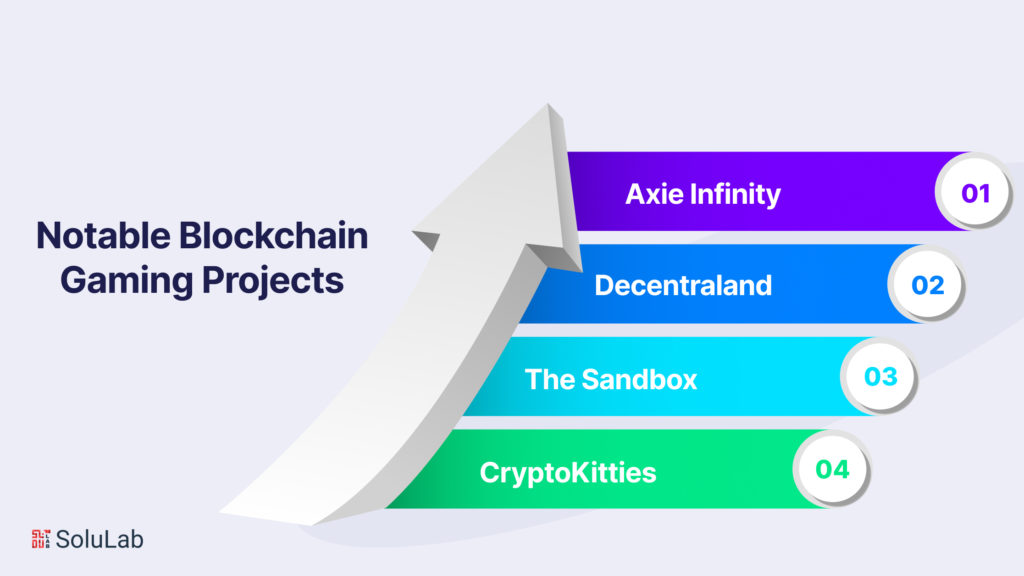
Several blockchain-based games and platforms have gained attention for their innovative use of blockchain technology. Here are a few notable examples:
-
Axie Infinity
As mentioned earlier, Axie Infinity is a blockchain-based game where players collect, breed, and battle fantasy creatures called Axies. These creatures are NFTs (non-fungible tokens) that can be bought and sold in a marketplace. Axie Infinity has seen remarkable growth, with players earning cryptocurrency for their in-game activities.
-
Decentraland
Decentraland is a virtual world built on the Ethereum blockchain, allowing players to buy, sell, and build on virtual land parcels. The ownership and transactions of these virtual properties are secured on the blockchain. Decentraland represents a metaverse, a concept that envisions interconnected virtual worlds.
- The Sandbox
The Sandbox is a user-generated content platform that lets players create, own, and monetize their gaming experiences and assets. These user-generated assets are represented as NFTs on the blockchain, and creators can sell them in a marketplace.
-
CryptoKitties
CryptoKitties, one of the earliest blockchain games, introduced the concept of collectible, breedable, and tradeable digital cats. Each CryptoKitty is an NFT, allowing players to own and trade these unique digital pets.
Economic and Social Impact
One of the most remarkable aspects of play-to-earn games is the economic empowerment they offer to players. Unlike traditional games, where players often invest time and money for purely entertainment purposes, play-to-earn games enable participants to monetize their gaming skills.
These games have the potential to transform the lives of players, especially in regions where traditional job opportunities may be limited. In countries with economic disparities, play-to-earn games have opened doors to financial independence. Players can earn a living wage by participating in these virtual worlds, making it possible to support themselves and their families through gaming.
For instance, in the Philippines, where the cost of living is high and job opportunities can be scarce, many players have turned to games like Axie Infinity to make a decent income. They earn cryptocurrency by breeding and battling Axies, which they can then convert into real-world money.
Check Out Our Blog: Top Blockchain Technology Companies in 2025
Redefining the Gaming Experience
Play-to-earn games offer a unique gaming experience that sets them apart from traditional titles. In these games, the player’s investment of time and skill translates into tangible rewards, creating a sense of accomplishment beyond the virtual realm.
Players not only immerse themselves in captivating gameplay but also have a vested interest in their in-game activities. Every move, every strategy, and every decision can affect their earnings. This dynamic makes the gaming experience more engaging, as players are directly linked to the outcomes of their in-game actions.
As a result, play-to-earn games often foster dedicated communities, with players supporting and learning from one another. The social aspects of gaming have never been more pronounced, as players share tips, strategies, and stories about their experiences.
Social and Cultural Implications
The rise of play-to-earn games has social and cultural implications that extend beyond gaming. These games have introduced a new way of earning income and have disrupted traditional notions of work and leisure.
Read Also: Top 10 Real World Applications of Blockchain Technology
In some cultures, the concept of making money through gaming has met with skepticism or misunderstanding. However, as these games gain traction and visibility, societal perceptions are evolving. The success stories of players who have achieved financial stability and success through play-to-earn games are changing the narrative, legitimizing gaming as a viable career.
Additionally, the communities within play-to-earn games have transcended geographical boundaries. Players from diverse backgrounds and locations come together, share experiences, and collaborate, demonstrating the unifying power of gaming. This inclusivity has the potential to foster greater understanding and global cooperation.
Challenges and Concerns
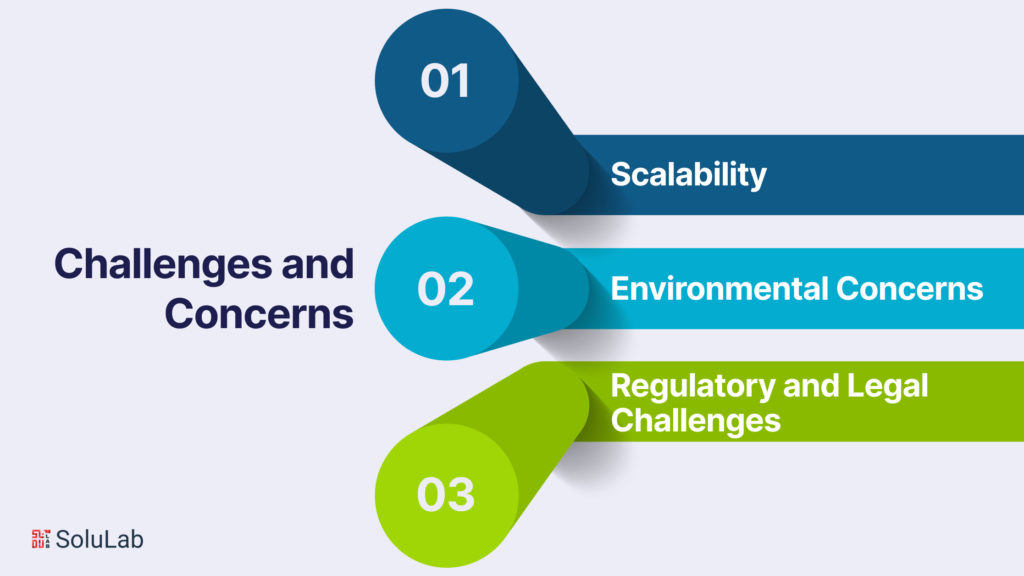
-
Scalability
The adoption of blockchain technology in gaming is not without its challenges. Scalability is one of the primary concerns. Many blockchain networks face limitations in terms of transaction speed and capacity. This can lead to slow or congested gameplay experiences in some blockchain-based games. Developers are actively working on solutions, such as layer-2 scaling solutions, to mitigate this issue and ensure seamless gameplay.
-
Environmental Concerns
Another concern is the environmental impact of blockchain networks. Most blockchain networks, including Bitcoin and Ethereum, rely on a proof-of-work (PoW) consensus mechanism that consumes a substantial amount of energy. This has led to concerns about the carbon footprint of blockchain technology. To address this, some projects are transitioning to more energy-efficient consensus mechanisms, like proof-of-stake (PoS).
-
Regulatory and Legal Challenges
The regulatory landscape for blockchain gaming is still evolving. Different countries have varying approaches to regulating cryptocurrencies and virtual assets, which can create legal uncertainties for developers and players. The industry is in the early stages of addressing these regulatory challenges, but it’s essential for the long-term success of play-to-earn games.
Play-to-Earn and the Future of Gaming
The growth of play-to-earn games has been nothing short of phenomenal. The success of games like Axie Infinity and the increasing popularity of metaverse concepts indicate a bright future for this gaming paradigm. The number of players and investors entering the space continues to rise, with NFTs from blockchain games frequently making headlines.
Market statistics reveal a steady upward trajectory, with the global blockchain gaming market estimated to reach significant values in the coming years. New players are eager to explore the potential of play-to-earn, and the competition among blockchain game developers is intensifying.
Technological Innovations
The rapid pace of technological innovation is another key driver of the play-to-earn revolution. Developers are continually pushing the boundaries of what’s possible, creating immersive virtual worlds and innovative gameplay experiences. The integration of augmented reality (AR) and virtual reality (VR) with blockchain gaming is on the horizon, promising even more immersive and engaging experiences.
Predictive algorithms and artificial intelligence are also being used to create more dynamic and responsive in-game environments, where the player’s choices have far-reaching consequences. These innovations are set to redefine how we engage with play-to-earn games.
Predictions and Speculations
While predicting the future of any industry is always challenging, several trends and possibilities are worth considering:
1. The Metaverse Revolution: The concept of the metaverse, an interconnected network of virtual worlds, could become a reality. The metaverse would offer limitless possibilities for players to explore, interact, and earn across different virtual landscapes.
2. Mainstream Adoption: As blockchain technology becomes more accessible and user-friendly, play-to-earn games may experience mainstream adoption. Traditional game developers may also integrate blockchain features into their titles.
3. Regulatory Clarity: Governments and regulatory bodies are expected to provide clearer guidelines for blockchain gaming, addressing legal concerns and ensuring a secure environment for players and investors.
4. Diverse Revenue Streams: Play-to-earn games might introduce new and diverse revenue streams, including NFT-based virtual real estate, streaming opportunities, and sponsored content within virtual worlds.
Conclusion
In summary, play-to-earn games are transforming the gaming industry by offering players real-world value for their in-game achievements. The integration of blockchain technology ensures true ownership, scarcity, transparency, and security, unlocking opportunities for players and reshaping the gaming experience.
The play-to-earn revolution is dynamic and continually evolving. As technology advances and the community grows, we can expect even more innovation in the years to come.
SoluLab offers comprehensive blockchain game development services, enabling the creation of immersive gaming experiences using blockchain technology. Our expert blockchain developers specialize in decentralized application development across various blockchain protocols, including Ethereum, Polygon, Binance, Hyperledger, Solana, Polkadot, and more. Whether you’re looking to build blockchain-based games or decentralized applications, we provide the expertise you need. Contact SoluLab today to explore the endless possibilities of blockchain gaming.
FAQs
1. What are play-to-earn games, and how do they work?
Play-to-earn games are video games that allow players to earn real-world value through in-game activities. These games are often built on blockchain technology, which ensures true ownership of in-game assets. Players can collect, trade, or sell these assets, turning their gaming skills into financial opportunities.
2. What is the role of blockchain in play-to-earn games?
Blockchain technology underpins play-to-earn games by providing a transparent, secure, and decentralized infrastructure. It enables true ownership of in-game assets, scarcity through blockchain-based tokens, and trustless transactions. Blockchain ensures that players have full control of their virtual assets and the ability to monetize them.
3. Can you give examples of successful play-to-earn games?
Yes, there are notable play-to-earn games such as Axie Infinity, Decentraland, The Sandbox, and CryptoKitties. Axie Infinity, for instance, allows players to collect, breed, and battle fantasy creatures called Axies, which are tokenized on the blockchain. Players earn cryptocurrency by participating in these activities.
4. What challenges do play-to-earn games and blockchain technology face?
Play-to-earn games encounter challenges related to scalability, environmental concerns due to the energy consumption of blockchain networks, and regulatory and legal uncertainties. Developers are actively working on addressing these issues to ensure a sustainable and secure environment for players.
5. How can I get started with play-to-earn games and blockchain gaming?
To get started, you’ll need to set up a digital wallet compatible with the blockchain used by the game. Next, explore different play-to-earn games and choose one that interests you. Acquire the necessary in-game assets, learn the gameplay, and start earning. Keep in mind that, like any investment, it’s essential to do your research and understand the game’s mechanics before getting involved.




